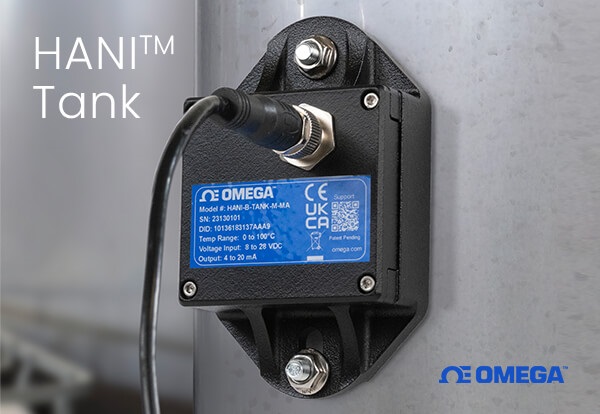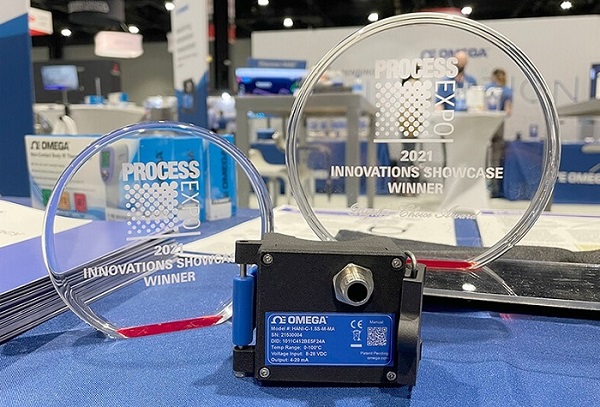Omega’s New HANI Tank Sensor for Contactless Fluid Temp Measurements
The High Accuracy Non-Invasive (HANI) tank temperature sensor by Omega makes quick, sanitary measurements for food, beverage, and other fluid product or process monitoring.
Omega Engineering has recently released the newest member of the High Accuracy, Non-Invasive (HANI) temperature measuring system, suitable for metal tanks. The primary advantage to this system is that there is no need to place a probe in the product, reducing the potential for contamination. As such, it is a natural fit for the food and beverage manufacturing industries that rely on uncontaminated products.
Immersion Sensors vs. Non-Invasive Sensors
Typical temperature measurements, even in the food and beverage industries, are performed with an immersion sensor that must be placed directly in the product for batch measurement, or placed in a housing that holds the probe in place for continuous measurements.
In the case of a removable sensor, there is a high risk of cross-contamination. Consider the food under the heat lamp at the local truck stop; periodically, a worker pokes sample pieces of chicken with a probe, perhaps wiping it off between pokes, or… perhaps not.
With continuous measurements, a probe port must be installed in the vessel, resulting in downtime each time the probe must be replaced. Furthermore, the probe itself may interfere with mixing operations, or become a collection point for debris or contamination, meaning spoiled goods could mix with the product stream. Also, a physical probe that sticks into a pipe or vessel may interfere with Clean-In-Place (CIP) operations and Steam-In-Place (SIP) operations that are widely used in the food and beverage industry.

The new HANI Tank Temperature Sensor from Omega Engineering. Image used courtesy of Omega Engineering
Non-invasive sensors use a different approach. They measure the temperature on the outside of the metal vessel, with full knowledge that the temperature is being transmitted through a thermally-conductive medium. As such, they can be installed easily and drastically reduce contamination potential.
The HANI Sensor
The newest version of the HANI family builds on the success of the clamp-mounted systems, relying on algorithms that measure the fluid on the other side of the tank wall indirectly. The previous clamping systems were suitable for pipes of varying diameters, but sensing across the wall of a large metal tank was difficult before the introduction of the HANI Tank sensor.
The HANI Tank sensor can take measurements in as little as 5 seconds, and is interfaced via a USB cable to the Omega temperature monitoring software. Installation of the HANI sensor requires only about ten seconds, and is so easy, one brewery customer remarked, “literally the easiest thing I’ve ever done.”

A version of the Omega HANI clamp sensor (previously released) with several recent awards. Image used courtesy of Omega Engineering
In terms of accuracy, the HANI sensor can measure temperature to within 0.9 F (0.5 C) on steel vessels, and within 1.8 F (1.0 C) on other metallic vessels. For best results, the tank, pipe, or vessel must be over 2 feet in diameter. This is significantly faster than RTD-based measurements and much safer than either batch or immersion-based temperature probes.
Non-Contact Sensing
The ability to measure temperature without contacting the product will make this a fantastic choice for food and beverage manufacturing. It will remove one potential source of contamination, as immersion sensors can cross-contaminate products or allow products to build up on the sensor, potentially releasing spoiled material into the product stream.
The accuracy does depend on the tank material, and the sensor must be in contact with metal (preferably steel) for the best measurements. While not suitable for fully thermally jacketed tanks, there may be a way to remove or displace the jacket in some systems to ensure metal contact.

 Facebook
Facebook Google
Google GitHub
GitHub Linkedin
Linkedin








